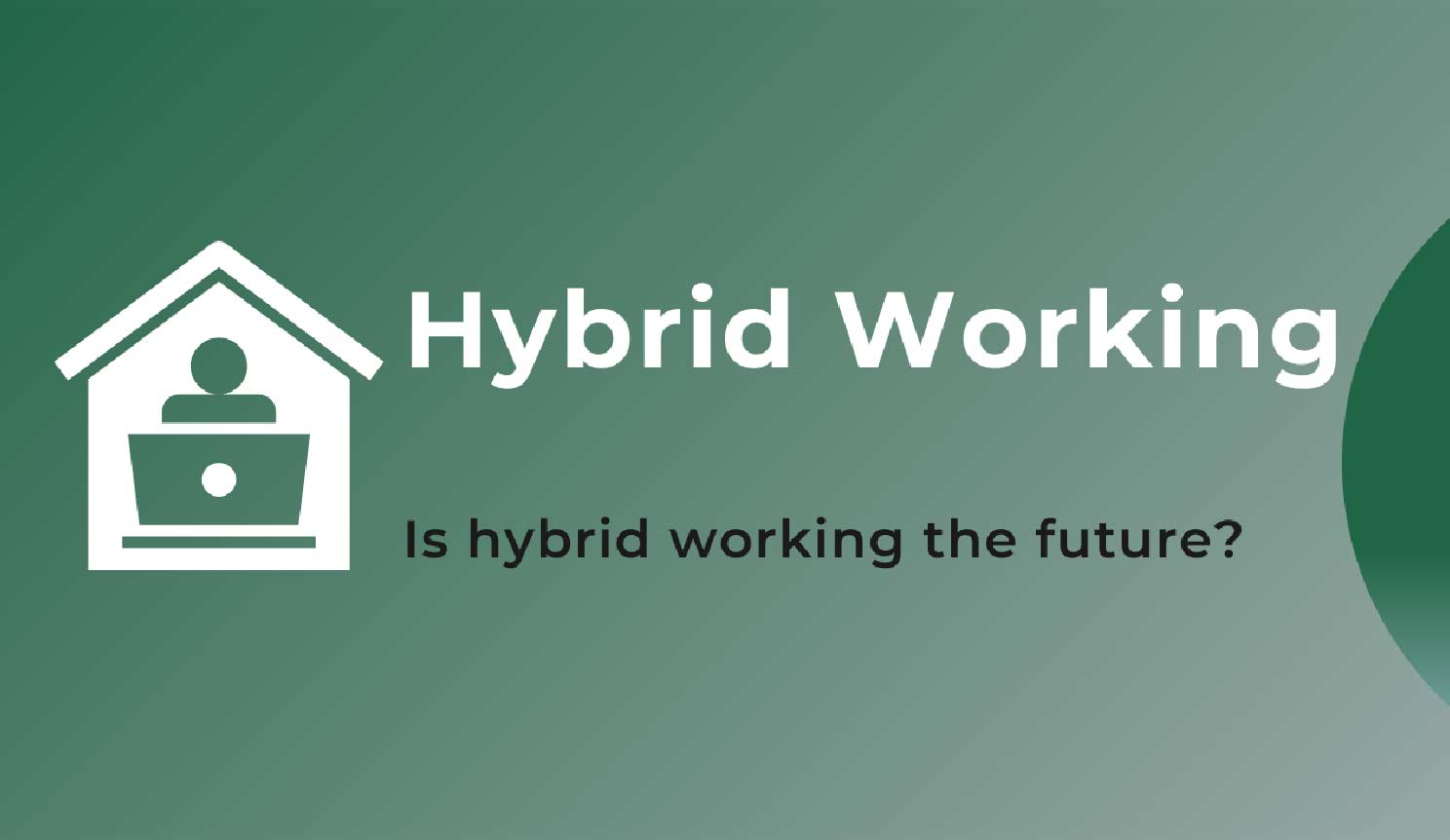What is hybrid working?
Hybrid working sometimes referred to as ‘blended working’, is a type of flexible working that allows employees to split their time between a traditional office and home working.
The rise of hybrid working
Due to Covid-19, many employees have been working from home in some form for 17 months. There has been a lot of talk in the media about returning to a different way of working, allowing employees to split their time between the home and office. There is definitely a call for it from employees.
Employees are calling for a hybrid working approach to allow them a better work-life balance.
Many employers recognise the benefits of accommodating employees so in this article we will look at: how to implement hybrid working; how to manage hybrid working; the pros and cons; some FAQ’s and our top tips for employers!
How to implement Hybrid Working
HR steps to consider in implementing a policy of hybrid working include:
- Agreeing on an overall strategic position on hybrid working for the company and developing a policy and guidance to compliment the strategy;
- Consider whether to ask your employees for their opinions or details of what might work for them;
- Engage managers throughout the company: provide an opportunity to ask questions and raise concerns, alongside training and development to support the success of a hybrid working policy
- Plan for the implications of hybrid working on logistics such as technology, mental health, and wellbeing, inclusion, and facilities
- Support effective team building and cohesion in hybrid teams
Legally, a policy of hybrid working can be implemented in various ways, the most common methods are:
- Agree on a permanent variation to the employee’s contract of employment
- Negotiate a compromise with an employee who refuses to return to the office on your hybrid working rules. Please note that, if the employee unreasonably refuses to return to the office for reasons other than a disability or genuine safety concerns.
- Do nothing for now but wait to see if your employees submit flexible working requests (see our blog here)
Other key considerations when implementing hybrid working are that the contract may need to be varied to amend:
- Place of work
- Hours of work
- Right to enter the employee’s house
- Detail of equipment and insurance
- Expenses/mileage
- Sickness reporting rules
- Confidentiality
- Right to deduct monies (such as for time wasted travelling back t collect forgotten items)
GDPR Policy
You will probably also need to review your GDPR policy!
If you plan to implement hybrid working as a long-term initiative, it would be sensible to trial it first, perhaps for 3 or 6 months to gauge how well it works in your organisation and to iron out any issues before implementing the policy long-term.
Managing Hybrid Working
To assist in managing hybrid working you should ensure:
- You have clear rules on how many days should staff be required to work from the office, or specific days for each employee to be in the office.
- You have rules on what employees should do with their phones when they come into the office (do they forward their home-desk phone?);
- That you encourage communication with staff when they have home-working days;
- That you impose a rule that cameras must be on when at home for team meetings;
- That you encourage staff to ‘log off’ at home. Employees should not be checking emails or working into the evening (unless they are agreed on shifts);
- Consider remote IT software to monitor activity/efficiency when necessary;
- Complete 1-2-1s more regularly than when working in the office
- Review and reassess the working patterns and efficiency regularly.
The advantages and disadvantages to Hybrid Working
Advantages | Disadvantages |
Employees value it! | Isolation anxiety – employees get less interaction with colleagues. |
Employees tend to have a better work-life balance. | Difficulties integrating employees into the team/culture of the business. |
Employers can attract & retain top talent. | Question mark over whether employees will be properly invested into the business and willing to stay for a long time if they only know their own team. Questions over internal progression within larger businesses. |
Businesses can use technology to their advantage to monitor the amount of work done. | Harder to identify performance concerns. |
Typically results in less sickness absence. | Hard-working staff can ‘burn out’, as difficult to monitor their activity and when they log-off. |
Typically results in less need for regular holidays. | More distractions at home e.g. children, washing, cooking etc. |
Reduced overheads. | Cost of providing equipment, however reduction in overheads perhaps offsets this. |
Data protection issues – can you be certain that you are complying with GDPR regulations AND employees are not copying or taking business sensitive information? | |
New younger employees not learning who to properly interact within the workforce. | |
FAQs
A virtual table discussion with our lawyers will be coming soon. Until then, check out our top 10 FAQs on hybrid working here.
Questions such as:
- Do employees have any contractual rights to stay at home if they have worked remotely for 12 months?
- Can I force a return to the workplace if an employee refuses?
- Is it legal to allow hybrid working during term time only when children are in school (to avoid distractions)?
- Will I be able to revert to a more traditional workplace working in the future?
Top Tips
Our absolute TOP TIP is to ensure that any business affords themselves the right to revert to office working in the future. It may be that in 1 or 2 years’ time, businesses have experienced problems with hybrid working and need to reconsider their position.
If you’re considering implementing hybrid working, you should:
- Contact us for our checklist for contract & policy changes;
- Read our FAQs (coming soon)
- Watch our virtual table discussion (coming soon)
Employment Law Solutions – Let us help you get it right!
We can help you ensure that your business is protected and that you can benefit the most from Hybrid Working. We offer 24/7, 365 guidance providing stress-free, pragmatic solutions to your problems. Our mission is to help you concentrate on what you do best – running your business. Protecting your business will always be our main priority.




